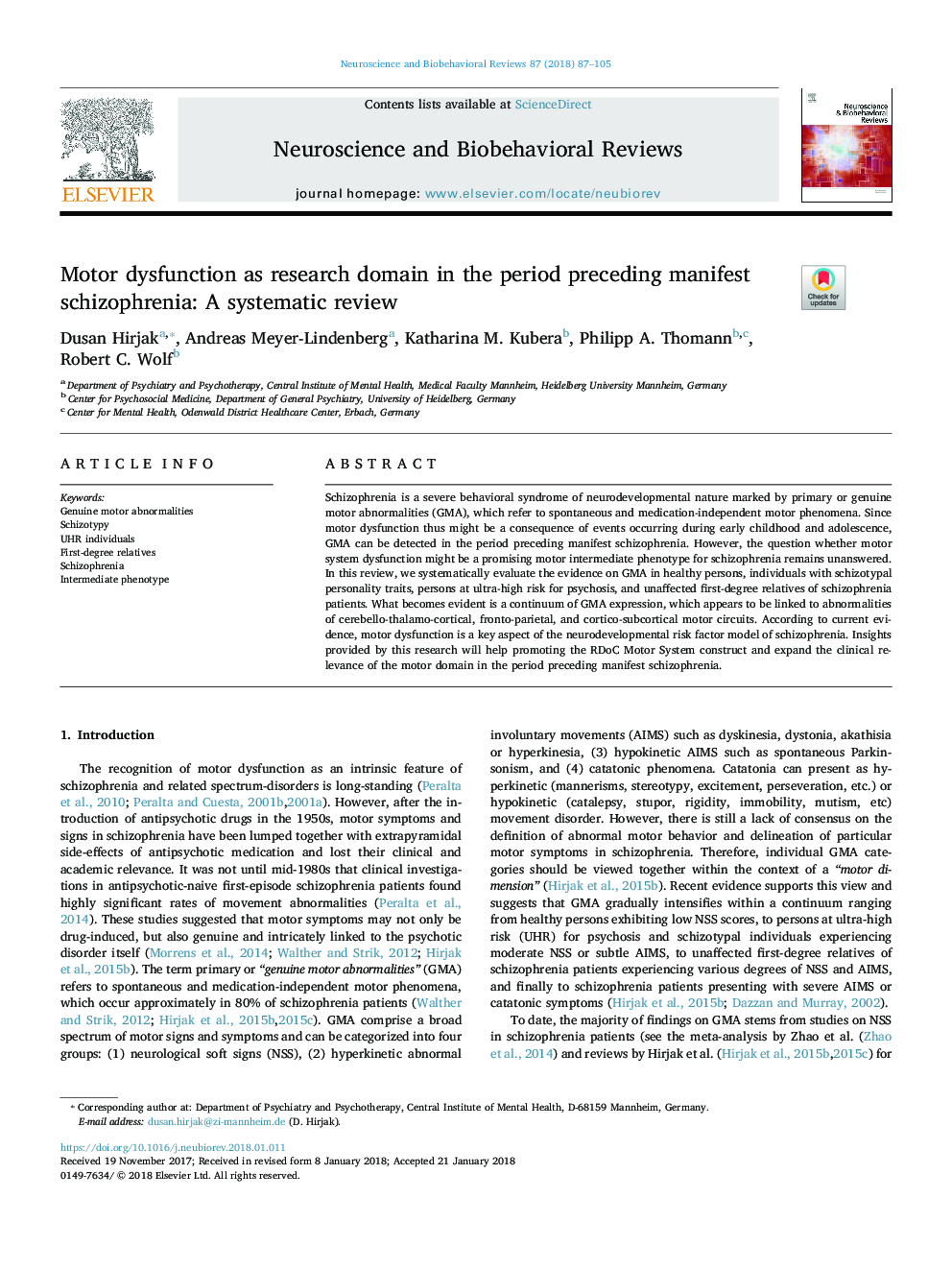| Article ID | Journal | Published Year | Pages | File Type |
|---|---|---|---|---|
| 7301948 | Neuroscience & Biobehavioral Reviews | 2018 | 19 Pages |
Abstract
Schizophrenia is a severe behavioral syndrome of neurodevelopmental nature marked by primary or genuine motor abnormalities (GMA), which refer to spontaneous and medication-independent motor phenomena. Since motor dysfunction thus might be a consequence of events occurring during early childhood and adolescence, GMA can be detected in the period preceding manifest schizophrenia. However, the question whether motor system dysfunction might be a promising motor intermediate phenotype for schizophrenia remains unanswered. In this review, we systematically evaluate the evidence on GMA in healthy persons, individuals with schizotypal personality traits, persons at ultra-high risk for psychosis, and unaffected first-degree relatives of schizophrenia patients. What becomes evident is a continuum of GMA expression, which appears to be linked to abnormalities of cerebello-thalamo-cortical, fronto-parietal, and cortico-subcortical motor circuits. According to current evidence, motor dysfunction is a key aspect of the neurodevelopmental risk factor model of schizophrenia. Insights provided by this research will help promoting the RDoC Motor System construct and expand the clinical relevance of the motor domain in the period preceding manifest schizophrenia.
Related Topics
Life Sciences
Neuroscience
Behavioral Neuroscience
Authors
Dusan Hirjak, Andreas Meyer-Lindenberg, Katharina M. Kubera, Philipp A. Thomann, Robert C. Wolf,
